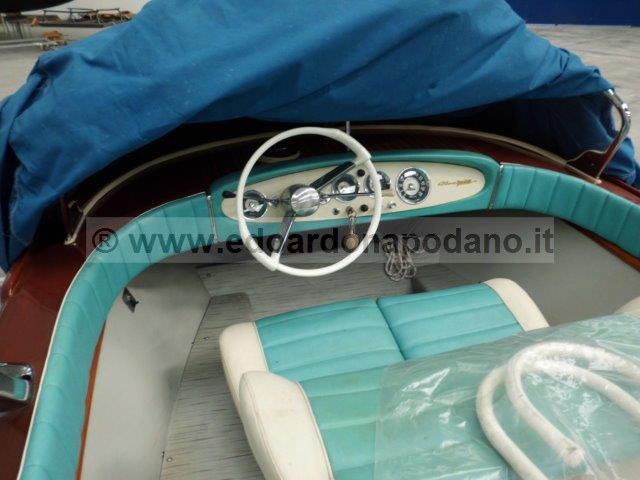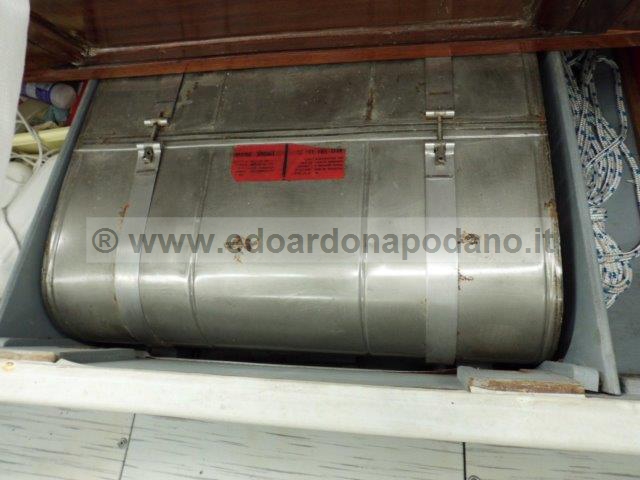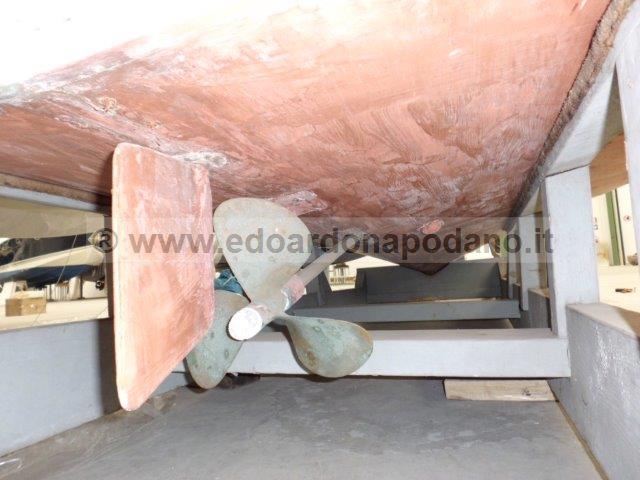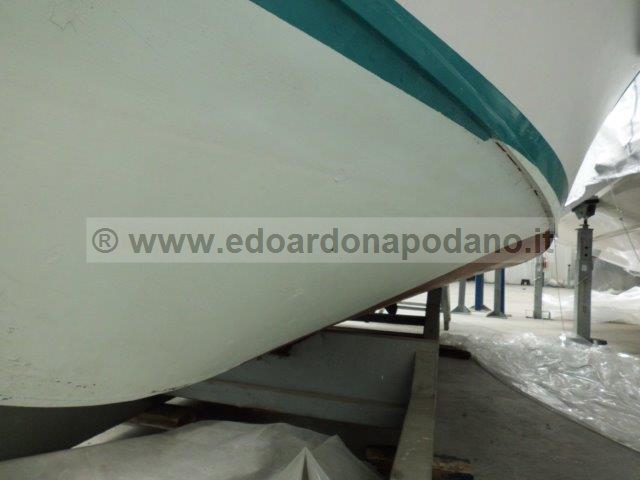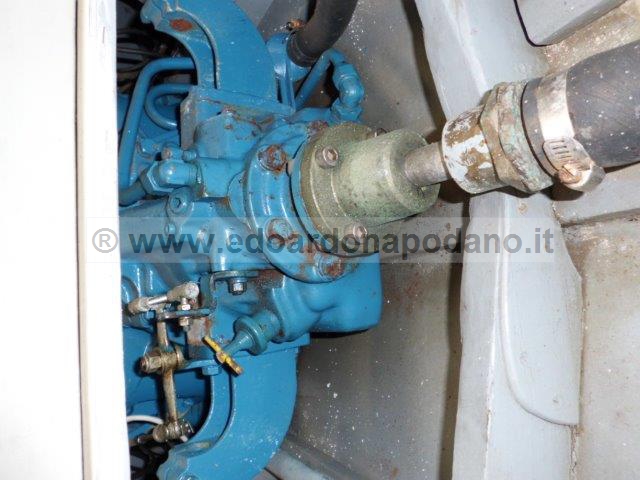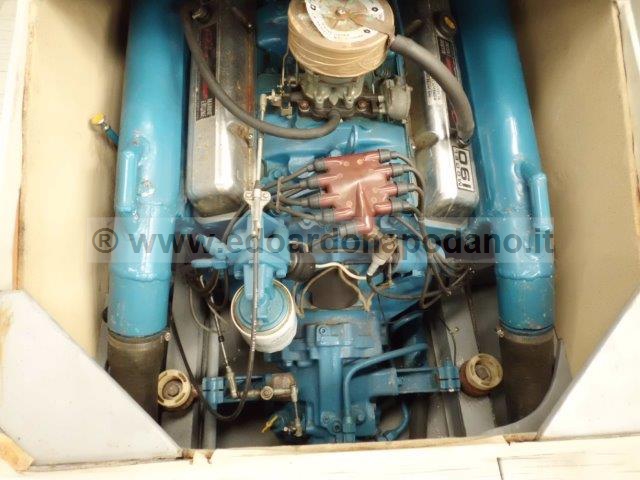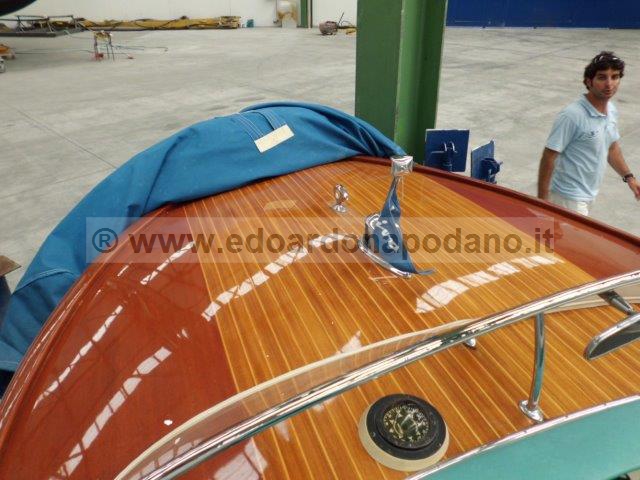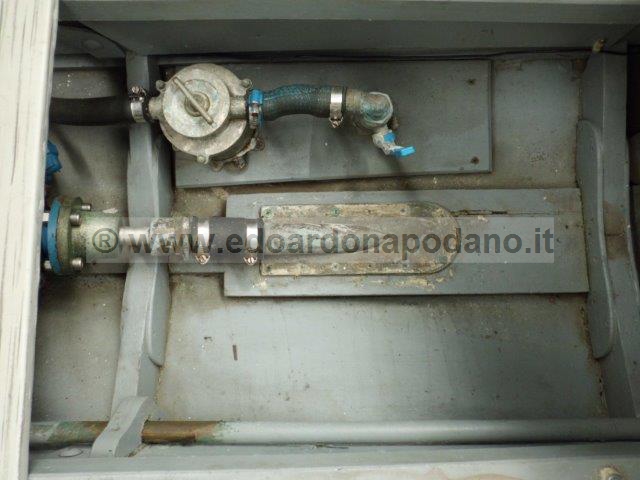This Junior stopped many years ago, but very well maintained, covered and wintered
It seems very original and the owner is a very good friend of mine
Shipyard: Riva
Designer: Riva
Construction: Wood
Loa: 5.70 m / 19′ ft
Beam: 2.04 m / 7′ ft
Draft: 0.92 m / 3′ ft
Displacement: 1 tons
Engine: 1 x Riva 190 V8 Hp. 190
Fuel Capacity: 100 l
courtesy RHS
Nasce nel 1966 per sostituire il Florida. Concepito con scopo utilitario e di più semplice manutenzione, sia per la pesca che per lo sci nautico, è caratterizzato da un grande pozzetto percorribile in piedi, protetti dalle murate, girando attorno al cofano motore ed al sedile di pilotaggio. Per una più agevole manutenzione fiancate e specchio di poppa sono pitturati di bianco e lo stile strizza l’occhio alla moda USA degli ”utility”. Il disegno dello specchio di poppa, ripreso anche nell’Olympic, ha lo scopo di proteggere i passeggeri dagli spruzzi del mare di poppa. La tappezzeria è turchese e bianca e riveste anche il cruscotto. Viene lanciato con lo slogan ”E’ la bomba dei giovani”. Gli strumenti sono ancora SW/ Chris Craft. Il pozzetto è protetto, verso poppa, anche da un comodo tientibene in mogano con un elaborato supporto anteriore in bronzo cromato, che incorpora la presa d’aria motori. Nel 1967 con lo scafo # 125 aumenta la lunghezza e con il # 129 cambiano le sezioni di carena. Con il # 162 vengono montati gli strumenti V.D.O., ma con fondo verde pastello. Il # 239 del 1967 è lo scafo di prova per la serie 1978 con una carena definitiva (V di 10° allo specchio di poppa e di 18° a mezza barca). Con il # 612 il pulsante di avviamento è protetto da un cappuccio in gomma. Incontra grande successo anche come tender di grossi yacht. Nel 1972 verrà sostituito dal Rudy, di disegno molto simile, un po’ più lungo, ma in vetroresina.
Introduced in 1966 to replace the Florida. Conceived for utility use and ease of maintenance, both for fishing and water skiing, it was typified by a large cockpit that could be walked round, protected by the bulwarks, around the engine cover and driving seat. The sides and transom were painted white for easy maintenance and the style winked at the USA fashion for ”utilities”. The design of the transom, also used for the Olympic, had the purpose of protecting the passengers from spray from the stern. The upholstery was turquoise and white and was also used to cover the dashboard. It was launched with the slogan ”It’s the young people’s rocket”. The instruments were again SW/Chris-Craft. The cockpit was also equipped along its sides by a large mahogany grab rail with an elaborate front stay of chrome plated bronze incorporating the engine air intakes. In 1967 the hull was lengthened from # 125 and the bottom cross-sections changed from # 129. VDO instruments, but with pastel green faces, were fitted from # 162. # 239 of 1967 was the trial boat for the 1968 series with a definitive bottom (a ”V” of 10° at the transom and of 18° amidships). The starter button was protected by a rubber cap from # 612. It also had great success as a tender for large yachts. In 1972 it was replaced by the Rudy, of very similar design and slightly longer, but made of fibreglass.

